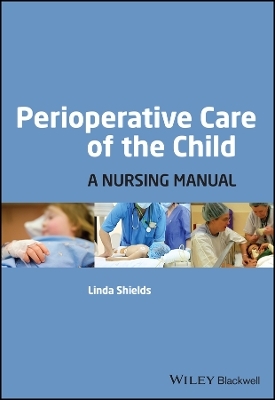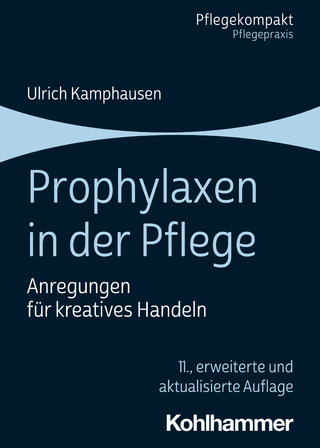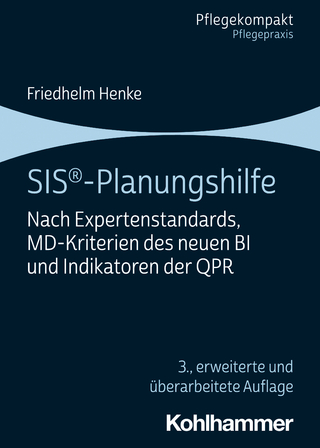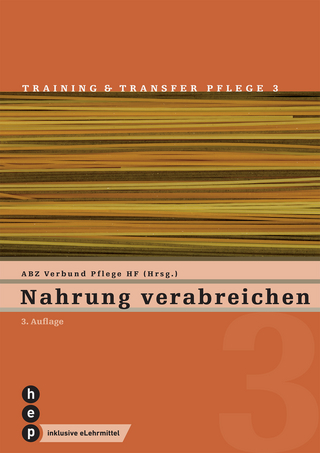
Perioperative Care of the Child
Wiley-Blackwell (Verlag)
978-1-4051-5595-3 (ISBN)
Perioperative Care of the Child Edited by well-known and highly-regarded children’s nurse Linda Shields, Perioperative Care of the Child is an essential resource for any children’s nurse working in a perioperative setting and all student nurses on the child branch. This timely and valuable text provides comprehensive coverage of the essential skills and knowledge required by practitioners in order to deliver safe and effective perioperative nursing care for the child requiring surgery before, during and after any operation.
Perioperative Care of the Child explores the role of the nurse in a wide variety of perioperative contexts, including anaesthetics, surgical procedures (including coverage of fetal surgery, endoscopic procedures and care of children with burns), paediatric transplantation, postoperative recovery, and pre- and post-hospital care. This essential resource benefits from an international perspective, with contributions from experienced and highly-specialised clinicians from around the world.
Essential reading for children’s and perioperative nurses, and others who work in the perioperative area.
Evidence-based, with clear links to nursing practice.
Focuses on key skills and knowledge.
Emphasises patient-centred care.
Edited by an internationally-regarded children’s nurse.
Linda Shields is Professor of Paediatric and Child Health Nursing at Curtin University, and the Child and Adolescent Health Service, Western Australia. Prior to that, she was Professor of Nursing at Hull University and Honorary Professor at the University of Queensland, Australia and Northumbria University, UK.
Contributors ix
Introduction xi
Acknowledgements xiii
Abbreviations xiv
1 The history of children’s perioperative care – Jeremy Jolley 1
Why history is important 1
What is perioperative nursing? 1
A brief history of perioperative nursing 2
The development of perioperative nursing 5
Key discoveries in perioperative care 6
Early beginnings of surgery for children 7
The growth of paediatric surgery 9
Conclusion: perioperative nursing of children 10
References 11
2 The psychosocial care of children in the perioperative area – Linda Shields 13
Children’s perceptions of the operating theatre 13
The effect of hospitalisation on children 14
Models of care 16
The presence of parents 19
Play in the operating theatre suite 20
Emotional, social and spiritual needs of the patient 20
Conclusion 21
References 21
3 Care of the child in the operating room – Linda Shields and Ann Tanner 23
Preparation of children for theatre 23
Admission prior to surgery 24
Observation 25
Weight 25
Surgical history 25
Medical history 25
Medications 27
Body/site preparation 27
Pre-admission clinic 27
Emergency admission 28
Day of surgery admission 29
Reception in the operating suite 30
Registration on entrance to the OR 31
Fasting 31
Other things to check on admission to the OR 32
Safety of children in the operating theatre 33
Specific safety issues for children during induction 33
Post anaesthetic/post operative 34
Standing orders 36
Conclusion 37
References 37
4 Nursing care and management of children’s perioperative pain – Bernie Carter and Denise Jonas 39
Introduction 39
Preparing and teaching children and parents about pain 41
Agency, education and training of health care professionals 42
Assessing children’s pain 43
Core approaches to pain assessment 44
What tools to consider using with particular groups of children 46
Non-pharmacological interventions 46
Overview of pharmacological intervention 47
Routes of administration 48
Other local anaesthetic infusions 55
Discharge home 55
Conclusion 56
References 56
5 Surgical procedures on children – Linda Shields and Ann Tanner 66
Introduction 66
Common surgical procedures performed on children 66
Acknowledgement 96
References 96
6 Day surgery for children – Ann Tanner 101
Day procedure centres 101
Pre-admission preparation 105
Admission to the day procedure centre: preparations for surgery 105
Compartment syndrome 112
Admission to theatre 112
Ward stage recovery: post-operative care 113
Conclusion: support at home 116
References 116
7 Anaesthesia in children – Wendy McAlister 119
Introduction: What is anaesthesia? 119
The anaesthetic nurse 119
Children undergoing anaesthesia 120
Anaesthetic equipment 121
Airways 124
Anaesthesia 127
Analgesia 130
Patient preparation 130
Fasting 130
Premedication 131
Loose teeth and nail polish 131
Hearing aids and glasses 132
Jewellery 132
Preparation prior to patient arrival 132
Patient arrival in theatre 133
Induction 133
Rapid sequence induction 135
Fluids 135
Monitoring 135
Documentation 136
Anaesthetic emergencies 136
Anaphylaxis 138
Suxamethonium apnoea 138
Malignant hyperthermia 139
Emergence 139
Regional anaesthesia 140
References 141
8 The paediatric post-anaesthetic care unit – Eunice Hanisch 144
Introduction 144
In the PPACU 144
The post-operative environment 147
Oxygen delivery 149
Suction 151
Physiological assessment and management of the paediatric post-anaesthesia patient 151
A – Airway management and B – Breathing 151
Respiratory complications and nursing interventions 152
C – circulation 155
Thermoregulation and temperature abnormalities 156
Post-operative nausea and vomiting 160
Pain management in the PPACU 164
Infection control 165
Fluid and electrolyte balance 166
Wounds and dressings 168
Patient positioning 168
Latex allergy 169
Children with epilepsy 170
Delayed emergence 170
Emergence delirium 171
Discharge of the patient from the PPACU 171
Psychological assessment 172
References 175
9 Fetal surgery – Roy Kimble 179
Introduction 179
History 179
The risks of fetal surgery 180
Fetal conditions amenable to fetal surgery 181
Ex utero intrapartum treatment (EXIT) 183
The future 184
References 184
10 Perioperative care of children with burns – Roy Kimble and Julie Mill 185
Introduction 185
History 185
Epidemiology of burns in children 186
A multidisciplinary service approach 187
Clinical assessment of burn severity 188
A – Airway 189
B – Breathing 189
C – circulation 190
D – Neurological disability 190
E – Exposure with environment control 190
Classification of burn depth 190
Determination of burn depth 191
Laser Doppler scanning 191
Electrical burns 192
Chemical burns 193
Calculation of burn surface area 193
Management 193
Burn wound care 195
Preparation for theatre 197
Pain management via acute pain service 199
Post-operative care 200
Physiotherapy 200
Infection control 200
Toxic shock syndrome 201
Tetanus 202
Human immunodeficiency virus (HIV)-positive children 202
Scar management 202
Discharge planning 202
References 204
11 Paediatric transplantation – Rebecca Smith and Susan Tame 208
Introduction 208
Becoming an organ donor 208
Types of donation 209
Role of the transplant co-ordinator 213
Donor care and management 215
Making the donation request 215
Preoperative care of a potential paediatric donor 216
Perioperative care 222
Recipient management and care 229
Cardiothoracic organs 230
Immediate post-operative care 233
Liver 234
Kidneys 235
Small bowel, liver and multivisceral 237
Reducing the risk of rejection of the new organ 238
Longer-term post-operative care 239
The future 240
References 242
Further reading 243
12 The care of children having endoscopic procedures – Janet Roper and Linda Shields 245
Introduction 245
The perioperative nurse’s role 246
Preparing children for endoscopic procedures 248
Perioperative care 248
Service perspectives 249
Equipment for MIS and endoscopy 251
Conclusion 258
References 258
13 Ethical and legal issues in paediatric perioperative care – Linda Shields 261
Patients’ rights 261
Self-determination 262
Privacy 262
Confidentiality 262
Consent 263
Legal perspectives 264
Medical futility 265
Conclusion 265
References 266
Index 267
| Erscheint lt. Verlag | 4.12.2009 |
|---|---|
| Verlagsort | Hoboken |
| Sprache | englisch |
| Maße | 173 x 245 mm |
| Gewicht | 517 g |
| Themenwelt | Medizin / Pharmazie ► Pflege |
| ISBN-10 | 1-4051-5595-7 / 1405155957 |
| ISBN-13 | 978-1-4051-5595-3 / 9781405155953 |
| Zustand | Neuware |
| Haben Sie eine Frage zum Produkt? |
aus dem Bereich


